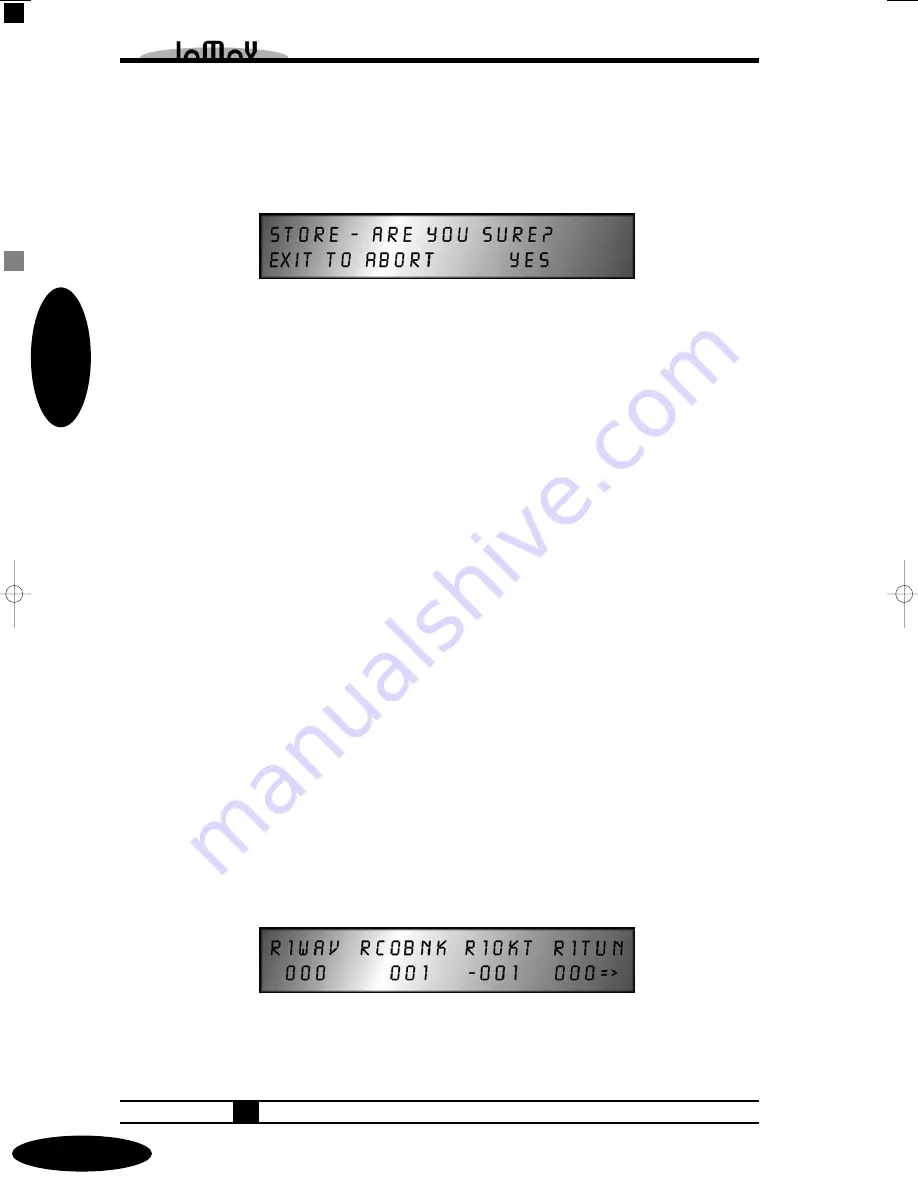
Storing Multi Programs:
Storing a Multi Programm is done the same way as storing a Single Sound, therefore, we’ll
only give a brief description.
1. Press the
(Store)
-button.
The LED-Display flashes.
The LC Display shows:
2. To store to the selected/original location, press
(Soft-Button) < Yes >
.
• To store to another location, select another Multi Program with the
(Load)
-knob or
(Number)-buttons.
By pressing
(Soft-Button) < Yes >,
you can save the edited Multi Program.
3. To cancel the operation, just push the
(Exit)
-button.
Menu-driven Features
As we’ve already mentioned, the SUNSYN also has some menu-driven features. These
consist of global functions, arpeggiator settings, midi parameters and midi controller
assignments.
Menu structure:
The way these menus work is simple:
• You enter the menus by pressing the
(Menu)
-button. No matter which menu you are in, you
can go back to the top info page by pressing this button.
• You can use the corresponding
(Soft Button)
to select a sub-menu. (Don’t panic, there very
few submenus).
Submenus
will always be displayed in the
lower
LC Display line. This way, you’ll immediately
know whether you are in a menu where you can edit parameters or in a submenu-selection list.
Editable parameters
are always shown in the
higher
LC Display line, whereas their values are
in the lower LC Display line.
Some menus are too big to be shown on one display. They are shown on two ”pages“. To see
the entire menu, you have to scroll between both halves by pressing the (Page)-button. An
arrow in the LC Display indicates whether a menu consists of two ”pages“. This arrow appears
in the lower left or right corner, depending on what direction you have to scroll to see the other
parameters.
E.g.: the LC Display shows the following after selecting the RCO menu:
or
Menu-driven Features
2-3
018
Quick Start
thebook-all 07.11.2002 18:28 Uhr Seite 18 (Schwarz Bogen)






























